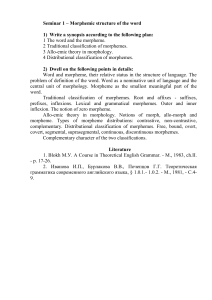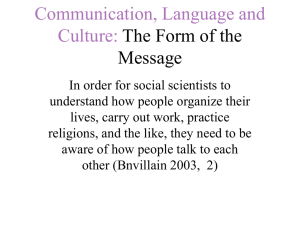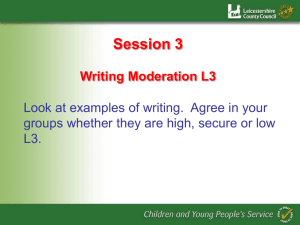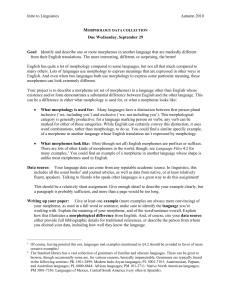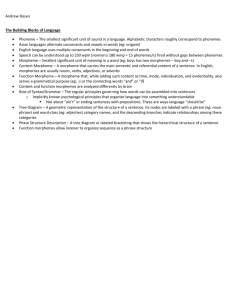幻灯片 1
advertisement
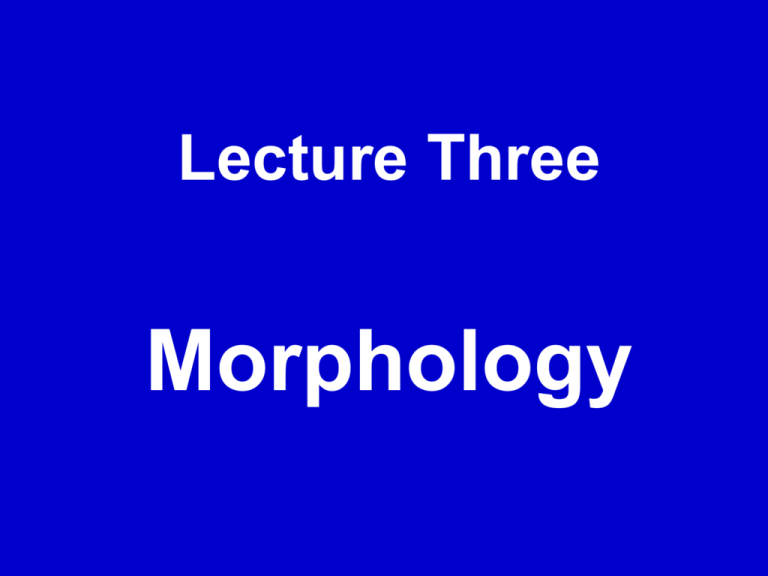
Lecture Three Morphology I. Open class and closed class, morphology Open class: nouns, verbs, adjectives and adverbs to which new words can be added. For example: beatnik (a person who rejects or avoids conventional behavior) Closed class: conjunctions, prepositions, articles and pronouns to which new word are not usually added Morphology: Morphology refers to the study of the internal structure of words, and the rules by which words are formed. II. Morpheme: the minimal units of meaning A single word may consist of one or more morphemes. Example: a word over 5 morphemes Anti+dis+establish+ment+ari+an+ism (国教废除论) (Hu, Liu & Li, 1988, p. 87) Affixes: prefixes and suffixes, disorder, wonderful Bound morphemes and free morphemes: disorder, girl Derivational morphemes: blacken, physician (may change class or words, a new word is derived or formed) Inflectional morphemes: grammatical markers, signifying such concepts as tense, number, case and so on, they do not change the syntactic category of the original words, such as “–ed”, and “–ing” Some morphemes don’t have any lexical meanings in sentences, such as “to” and “it”. III. Morphological rules of word formation The ways words are formed are called morphological rules. Examples: un + inhabit + able (un + adjective = not – adjective) un + decided (un + adjectival form derived from a verb) Some morphological rules can be productive but some are less. IV. Compounds Compounds: stringing words together 1. 2. 3. 4. Same category: landlady, blue-black, icy-cold Category changed keeping the grammatical category of the final word: head-strong, pickpocket compounds have different stress patterns from the noncompounded word sequence, `redcoat, `greenhouse; red `coat, green `house The meaning of a compound is not always the sum of the meanings of its parts. For example, redcoat (在美国独 立战争中服役的英国士兵), bigwig (有重大影响的人), highbrow, jack-in-a-box (a tropical tree), turncoat (a tractor) Compounding is then a very common and frequent process for enlarging the vocabulary of the English language. References Dai, W. D & He, Z. X. (2002). A new concise course on linguistics for students of English. Shanghai: Shanghai Foreign Language Education Press. Hu, Z. L., Liu, R. Q. & Li, Y. F. (1988). Linguistics: a course book. Beijing: Beijing University Press. Task Do the following in groups: 1. Divide the following words into their separate morphemes by placing a “+” between each morpheme and the next: a. microfile e. telecommunication b. bedraggled f. forefather c. announcement g. psychophysics d. predigestion h. mechanist 2. The italicized part in each of the following sentences is an inflectional morpheme. Study each inflectional morpheme carefully and point out its grammatical meaning. Sue moves in high-society circles in London. A traffic warden asked John to move his car. The club has moved to Friday, February 22nd. The branches of the trees are moving back and forth.


